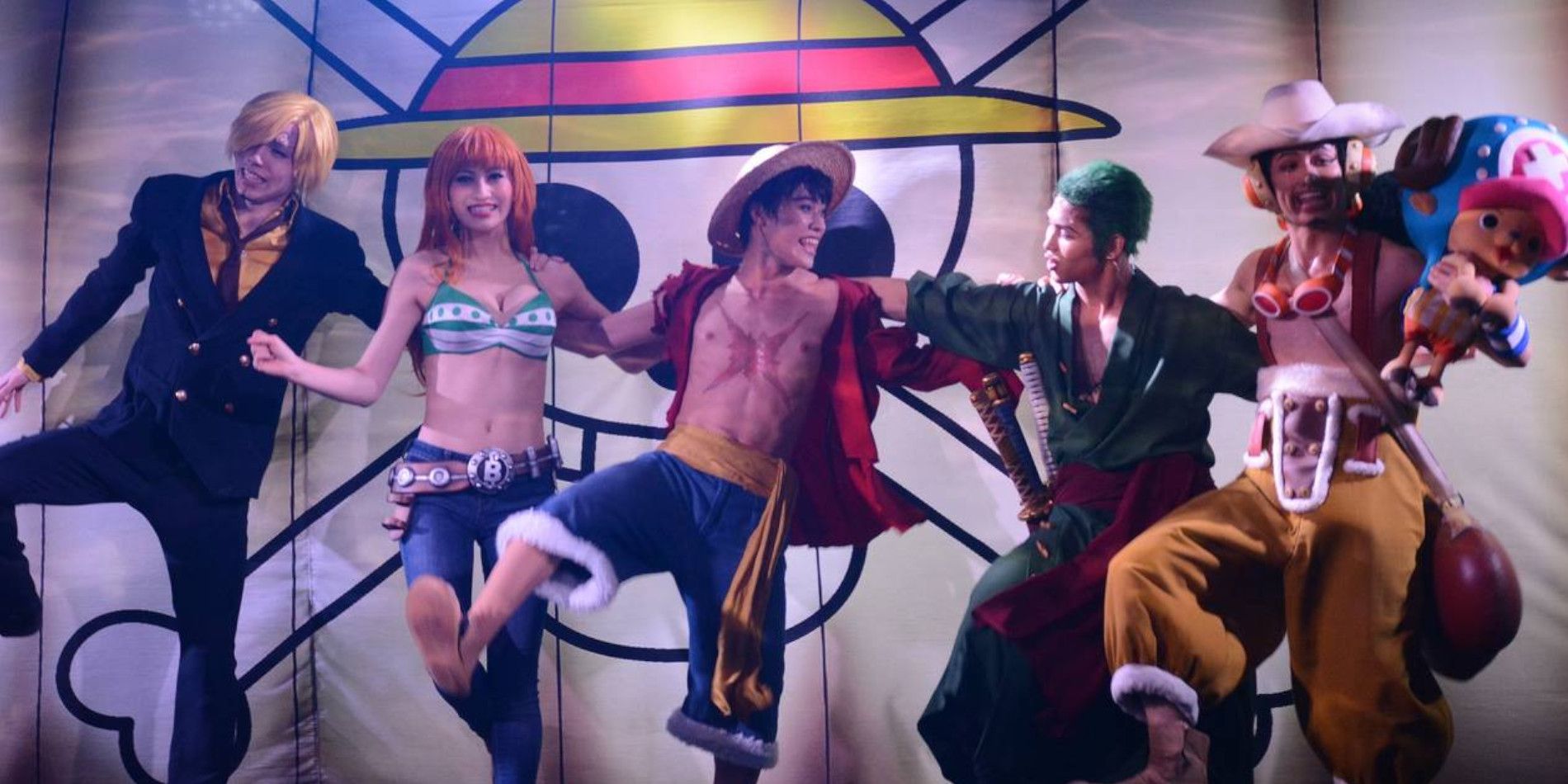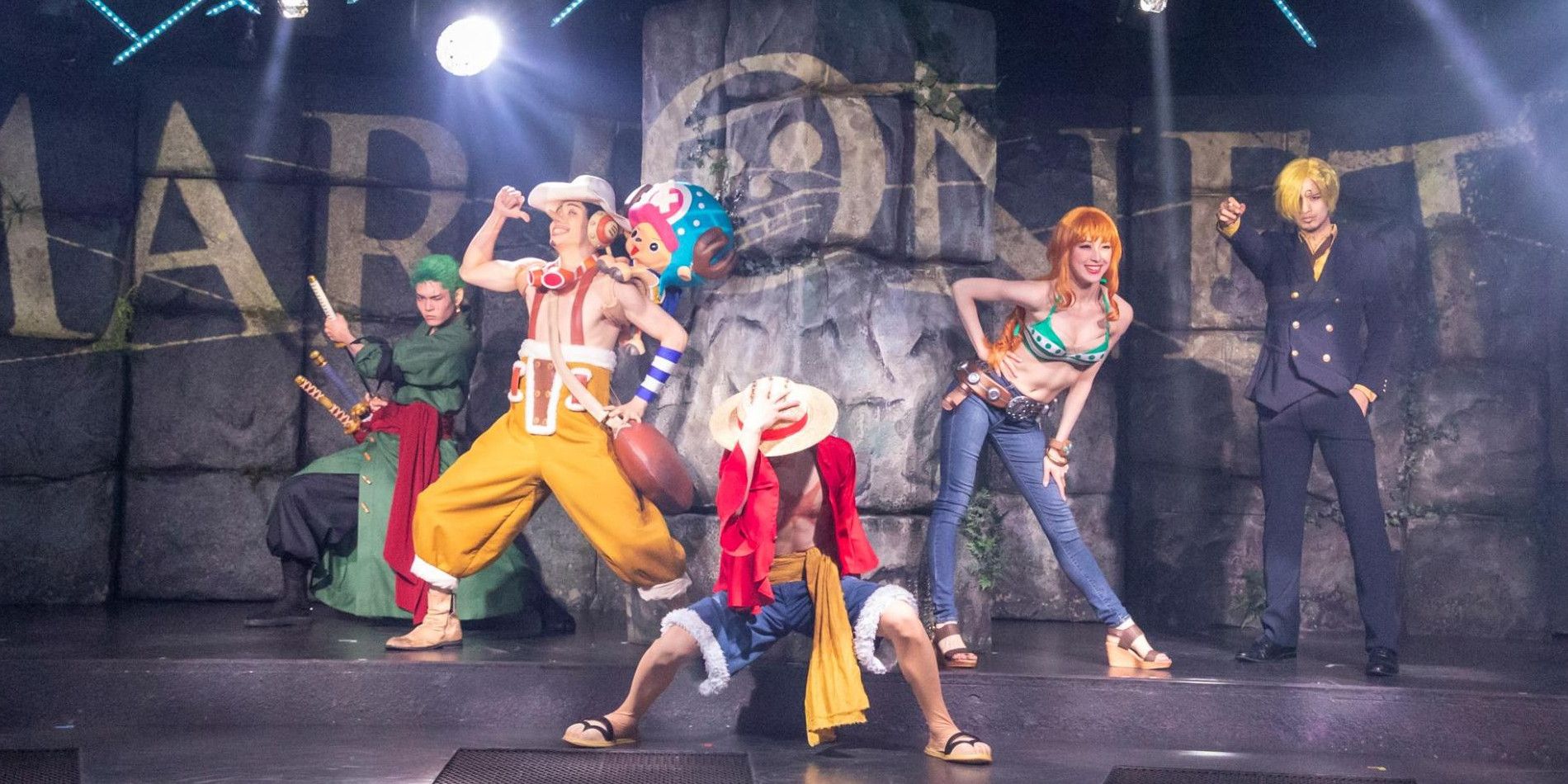The upcoming Netflix-produced live-action One Piece series is one of the most hotly debated and anticipated shows within the anime community. Fans are as worried as they are excited, wondering if the live-action can capture the heart and feel of the original manga and anime. However, this isn't the first time the franchise has moved into live-action, and these previous attempts could teach Netflix some vital lessons.
Over the years, One Piece has had many tie-in stage shows and live events. The first major one launched in 2007 with the One Piece Premier Show, with a different version following in 2010 and every year since. There have been other live shows, including Tokyo One Piece Tower's One Piece Live Attraction and several events held at Universal Studios Japan. While featuring similar themes, many of these shows tell original stories based on the One Piece anime and manga, often featuring special exclusive characters.
One of the most impressive details in these shows is how they handle the costumes. The stage shows work hard to make sure the Straw Hat Pirates look like their manga and anime counterparts. They also tweak and stylize the characters themselves to avoid costume elements that would look strange in three-dimensional space, which is often displayed with Franky, Brook, and Tony Tony Chopper due to their unusual proportions.
However, these stage shows always strive to make the characters look good as a group, which is important. Having some characters look vastly different from the others or giving them different levels of stylization draws audiences out of the show and makes the experience look like a cheap knock-off rather than a complete One Piece experience.
The original stories written for the stage shows tend to be simpler than the core franchise's plots, but this actually works in the show's favor as it allows them to only include elements that fit the live-action format. Naturally, you can't do large-scale ship battles or have sets representing loads of different and visually unique locations in most theaters. So, the shows get around this by focusing on storylines that stay in a few specific settings -- especially ones that are easy to represent.
This is also carried through to the characters' powers. The stage show's creators are acutely aware of which Devil Fruit abilities they can make look good on stage and avoid using ones they can't pull off well. Thus, Luffy rarely stretches his limbs in these plays. If he does, pre-rendered video footage or shadow puppets are used rather than trying to make a costume with stretchable arms, as this would risk looking goofy.
Despite these limitations, the stage shows are well-loved by fans because they capture the feel of the main series, perfectly nailing the tone and the characterization of the Straw Hat Pirates. This, mixed with the shows' use of the anime's soundtracks and sound effects, means they still feel like One Piece. That special feeling is the most important detail since, if the show has the correct feel, then fans can overlook the practical changes needed to make a story work in the stage show format.
While Netflix's live-action adaptation won't be like the stage shows, the latter have proved that One Piece can work in live-action if handled correctly. In fact, they present a model the Netflix show can learn from. The main lesson is to work within the medium to capture the original show's tone and the characters' personalities, while avoiding unrealistic elements without deviating from the anime's central emotional core. By doing this, they'll create something that retains the feel of One Piece without looking like a cheap imitation. Hopefully, a One Piece stage show lands in North America one day so fans can enjoy this unique take on the source material.



